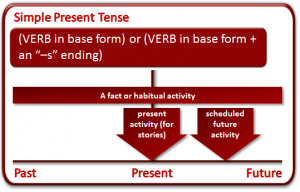Contoh Soal Latihan Materi Tentang Conditional Sentence

Contoh Soal Dikutip Dari BUKU : MEGA BANK OF GRAMMAR
EXCERCISE
1. Rina would have visited me if………….
A. She had had a lot of free time
B. She has had a lot of time
C. She has a lot of time
D. She had a lot of time
E. She had have a lot of time
2. If I read the newspaper, ……
A. I would get a lot of information
B. 1 will get a lot of information
C. I’m getting a lot of information
D. I get a lot of information
E. I have got a lot of information
3. If I were you,……..
A. I will attend that international conference
B. I attend that international conference
C. I would attend that international conference
D. I would have attended that international conference
E. I attended that international conference
4. If I had read the mathematics material, I would have understood this formula well. What is the fact of the previous sentence?
A. I’m not studying the mathematics material. Therefore, 1 have not understood about the material.
B. I do not read the mathematics material. Therefore, I do not understand this formula well.
C. I did not read the mathematics material. Therefore, I did not understand this formula well.
D. I did not read the mathematics material. Therefore, 1 do not understand this formula well.
E. I do not read the mathematics material. Therefore, I did not understand this formula well.
5. If it had not been raining, I would have visited my grandmother’s home What is the fact of the previous conditional sentence?
A. It was raining, so I did not go to my grandmother’s home
B. It is raining, so 1 do not go to my grandmother’s home
C. It has been raining, so I have not gone to my grandmother’s home
D. It is raining, so I did not go to my grandmother’s home
E. It rains, so I do not go to my grandmother’s home
6. If I had been finishing my thesis last year,…….
A. I would have been working as a lecturer in a state university
B. I would work as a lecturer in a state university
C. I will work as a lecturer in a state university
D. I would working as a lecturer in a state university
E. I work as a lecturer in a state university
7. If I had been applying for a scholarship last year, I would have been continuing my study in a foreign country.
What is the fact of the previous conditional sentence?
A. I am not applying for a scholarship last year. I am not continuing my study in foreign country.
B. I do not apply for a scholarship last year. I do not continue my study in a foreign country.
C. 1 was not applying for a scholarship last year. 1 was not continuing my study in a foreign country.
D. I did not apply for a scholarship last year. 1 did not continue my study in a foreign country.
E. I have not applied for a scholarship last year. 1 have not continued my study in a foreign country.
8. If it has not been raining, ……
A. I will go to the library
B. 1 am going to the library
C. I would go to the library
D. I go to the library
E. I would have gone to the library
9. If I work hard,…..
A. I would get a lot of money from my boss
B. I get a lot of money from my boss
C. I got a lot of money from my boss
D. I will get a lot of money from my boss
E. I would have got a lot of money from my boss.
10. If I had mastered the presentation’s material last night,……..
A. I will not be nervous right now
B. I would not be nervous right now
C. I am not nervous right now
D. I would have not been nervous right now
E. I was not nervous right now
11. If I had had lunch, I would not be hungry right now. What is the fact of the previous conditional sentence?
A. I haven’t had lunch, so I am hungry right now
B. I did not have lunch, so 1 am hungry right now.
C. I was not having lunch, so I am hungry right now.
D. I am not having lunch, so I am hungry right now
E. I do not have lunch, so I am hungry right now.
12. If I finished my Chemistry assignments, I would accompany you to the bookstore What is the fact of the previous conditional sentence?
A. I did not finish my assignments.
B. I was not finishing my assignments.
C. I don’t finish my assignments.
D. I am not finishing my assignments.
E. I haven’t finished my assignments.
13. I would have finished my assignments, but I have helped my sister preparing for her wedding. What does the previous sentence mean?
A. If I had not helped my sister preparing for her wedding, I assignments.
B. If I did not help my sister preparing for her wedding, I would have finished my assignment.
C. If I don t help my sister preparing for her wedding, I would have finished my assignment.
D. If I am not helping my sister preparing for her wedding, I would have finished my assignment.
E. If I was not helping my sister preparing for her wedding, I would have finished my assignment.
14. I would have cleaned my house, but I have had a big project in my office. What does the previous sentence mean?
A. If I haven’t have a big project in my office, I would have cleaned my house.
B. If I don’t have a big project in my office, I would have cleaned my house
C. If I had not had a big project in my office, I would have cleaned my house.
D. If I did not have a big project in my office, I would have cleaned my house,
E. If I did not had a big project in my office, I would have cleaned my house.
15. If I had a lot of money,……
A. I would go traveling around the world.
B. I will go traveling around the world.
C. I have to go traveling around the world.
D. I would have gone traveling around the world.
E. I will have to go traveling around the world.
Untuk Menyelesaikan Soal Diatas Anda Harus Menyimak Materi SBI Sebelumnya
Semoga Bermanfaat Para Sahabat SBI 🙂
















